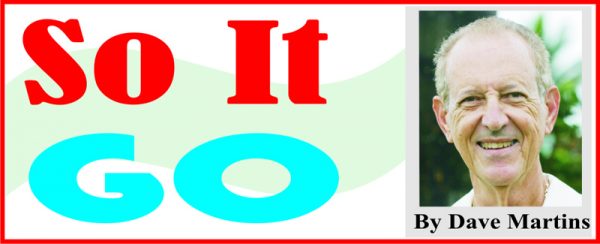
We can go back over our recent past, for example, and see persons who have acted as a brace or a stabilising force in our history, helping us to find accommodation and compromise. Cheddi Jagan, Forbes Burnham and Desmond Hoyte are obviously prime examples of it. One can recall, for instance, the role Mr. Hoyte played in stabilising the country following the sudden passing of Mr. Burnham, where he was able to keep Guyana from possibly devolving into chaos as he sought to turn the country’s praxis on a concerted forward path. And the examples go beyond those. One can even see the very physical structures of the young nation playing this role of support and connection with the building of the bridges across our many rivers, both along the coast and in the interior, operating as stanchions, holding things together.
The analogy will probably take on greater relevance if we look at the work of a range of persons in the society who were making a similar thrust in their individual efforts. Joe Singh is a prime example, both in his original key role in our military followed up by his work at the head of our telephone and telegraph company, where, in both cases, he succeeded in doing exactly what the dictionary tells us a stanchion does – remaining firm and on course in holding different pieces together. In his usual fashion, Major General (Retired) Singh will probably demur from the comparison I am making, but ultimately there is no stretch involved here; stanchion describes his applications to various functions in Guyana.
Sir David Rose, Guyana’s first Governor General (there’s a street named after him in Georgetown) is also a sterling example of a citizen who played a major stabilisation role in our emerging nation; a definite “stanchion” in this new and convoluted endeavour.
Often, we had non-Guyanese operating in this pivotal nation-building role in the country, particularly in the early colonisation years, and a prime example of this would be the American Arthur Williams, who founded our national airline, B. G. Airways, and was personally involved in the opening up of the interior through a series of hinterland airstrips and aircraft facilities. I worked at the Atkinson Field operation of the airline and knew Arthur Williams well enough to say he would probably have scoffed at the “stanchion” label being attached to him, but that was ultimately what he was contributing. Although to a lesser degree, the same could be said of his second-in-command, Harry Wendt, also an American.
To look around at the society with a wider lens, then and now, is to see the “stanchion” function operating to our advantage, literally across the board. In my very early youth, attending Sacred Heart Catholic School on Main Street, one could see the Carmelite nun, Sister Mary Joseph, in her role as principal, day after day, involved in that organisational role in the school. I don’t recall a single instance of anyone referring to her as a stanchion, but that was indeed the case.
Widening the subject even further, there are clearly examples of contributors in other fields. In music, we have the prime example of the calypsonian/composer Bill Rogers, of “B.G. Bajee” fame, at the top of his game here, but also making a name for Guyana outside, and others, including King Fighter, and later still, Lord Canary, followed in those early footsteps building on what Bill Rogers had created. It’s worth noting that when I started the Tradewinds band in Toronto in 1966, using my original songs, I was following in his footsteps.
In sport as well, we had the exploits of cricket stars Robert Christiani and John Trim – in later years Clive Lloyd and Shivnarine Chanderpaul – as well as highly recognised boxers and track stars including sprinter Tarrant Glasgow, and cyclists Laddie Lewis, and “Duck Eggs” Maurice Fernandes – stanchions all. One can stray into further subjects for the examples. In the press, we now have an array of editors, reporters and columnists (the latter including Freddie Kissoon, Adam Harris, Anand Persaud), who are generally seen as individuals operating as stanchions in their chosen field.
Overall, in whatever field one pauses to examine, there are examples of excellence on the horizon, assuring us that the tradition of important individuals in our various endeavours is there before us with hinterland photographer Bobby Fernandes being one of them, and young cinematographer Alex Arjoon, of Reel Guyana, being another. Even abroad, other examples of Guyanese stanchions would include Henry Muttoo who continues Guyanese and Caribbean traditions in the Cayman Island as artistic director of that country’s cultural work, and comedian Ken Corsbie making the same exertions in the USA – two more of our formidable contributors. The stanchions are indeed about. Some of the faces may be new, but their practice now, as they continue to operate as propellants, tells us that matters are in good hands. The stanchions are indeed about.




